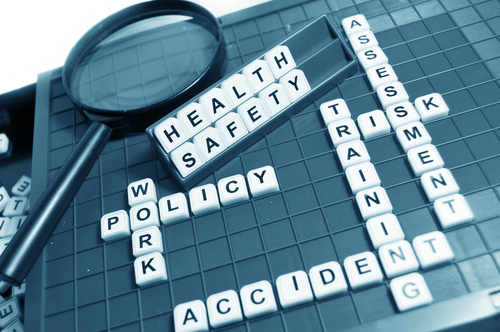Here are four key questions about workplace safety and health programs, with answers provided by OSHA.

What return on investment can safety and health programs provide?
- Improved employee morale
- Decreased lost time
- Fewer workplace injuries and illnesses
- Lower insurance costs
- Safety culture adoption
How can safety and health become a part of the way a business runs?
- Combine performance standards with safety and health standards
- Talk the talk and walk the walk
- Top down support
- Bottom up implementation
What indicators tell you if you’re getting weaker or stronger?
- Statistical reports
- Opinion surveys
- Risk analysis
- Periodic inspections
- Process improvement initiatives
Tracking performance is critical to continual improvement and the success of your safety program. BLR’s upcoming live webinar will explain EHS metrics and suggest strategies for choosing the right mix of indicators to drive safety success for the organization. Click here for details.
What practices are best for assuring lasting success?
- Obtain management buy-in.
- Build trust.
- Conduct self-assessments.
- Develop a site safety vision.
- Develop a system of accountability and measures.
- Implement recognition and rewards.
- Provide awareness training.
- Implement process changes.
- Continually measure, communicate results and celebrate successes.
Ensure the Success of Your Safety Program
Tracking performance is critical to continual improvement and success, but in the area of safety, many organizations have struggled to identify measurements that have a strong correlation to successful safety performance.
Many companies make the mistake of relying exclusively on lagging indicators, such as incident rates, lost or restricted workdays, or workers compensation costs. Although these can be useful and valuable indicators, they only provide an “after the fact” reactive view of your safety program.
A better practice is to incorporate leading indicators, which identify, track, measure, and correct the factors that have a strong correlation with potential accidents, into your overall safety metrics strategy. The goal is to use this information to identify accident casual factors and correct them before an accident happens.
Join us on August 26 for an in-depth, live webinar on EHS metrics. You will find out how to build a comprehensive plan to measure safety program success using leading and lagging indicators. Learn More
BLR’s in-depth webinar on August 26 will show you the differences between leading and lagging indicators and their associated strengths and weaknesses—this understanding is the critical first step in developing a comprehensive EHS performance measurement process. Our presenter will also suggest strategies for choosing the right mix of indicators to drive safety success for the organization.
You and your colleagues will learn:
- How to identify trailing (lagging) and leading measures and metrics and use them in an effective way
- What to consider when selecting EHS measures that drive high performance safety management success for your company or at specific facilities
- How to create the right balance in your safety performance measurement between leading and lagging measures
- How to include benchmarking considerations in your EHS measurement systems
- Important considerations for using audit results as a key measure of safety performance improvement
- Which EHS measures make the most sense to track and why they could have the greatest impact on your company’s safety and health program
- How to use measures to motivate, drive performance, and foster continuous improvement
- Successful strategies for objectively maximizing the use of leading safety measures
- The value of qualitative EHS measures and why safety professionals must resist pressures to avoid them
- How to effectively (and successfully) communicate EHS performance factors with CEOs, CFOs, COOs, and the board of directors
- How to best identify and evaluate resources to assist you in developing your EHS metrics program
About Your Speaker
Abby Ferri, CSP is an independent safety and health consultant. She earned her Masters Degree in Environmental Health and Safety and has been an industry expert since 2003. She became a Certified Safety Professional (CSP) in 2008 and continues to pursue professional development in the field of safety, health, and the environment.
In Ms. Ferri’s current role she is responsible for risk control, program development, and regulatory compliance updates for construction, manufacturing, and retail clients throughout the United States and Canada. Her previous experience included managing all aspects of safety, health, and environment programs including employee training, claims management, environmental policies and permitting in the construction industry. Ms. Ferri has provided risk control, safety, health, and environmental consulting services for general contractors, subcontractors, fabrication facilities and other construction and general industry workplaces.
How Do Webinars Work?
A webinar is remarkably cost-effective and convenient. You participate from your office, using a regular telephone and a computer with an Internet connection. You have no travel costs and no out-of-office time.
Plus, for one low price, you can get as many people in your office to participate as you can fit around a speakerphone and a computer screen.
Because the conference is live, you can ask the speakers questions—either on the phone or via the webinar interface.
You will receive access instructions via e-mail three days before the event and the morning of the event. Your conference materials will be included in these emails for you to view, print, and download prior to the event. They are also available on the webinar interface when you log in.
If you are ordering online the morning of the webinar please call our Customer Service Department at 1-800-727-5257 to be sure to get your access instructions and handout materials.
